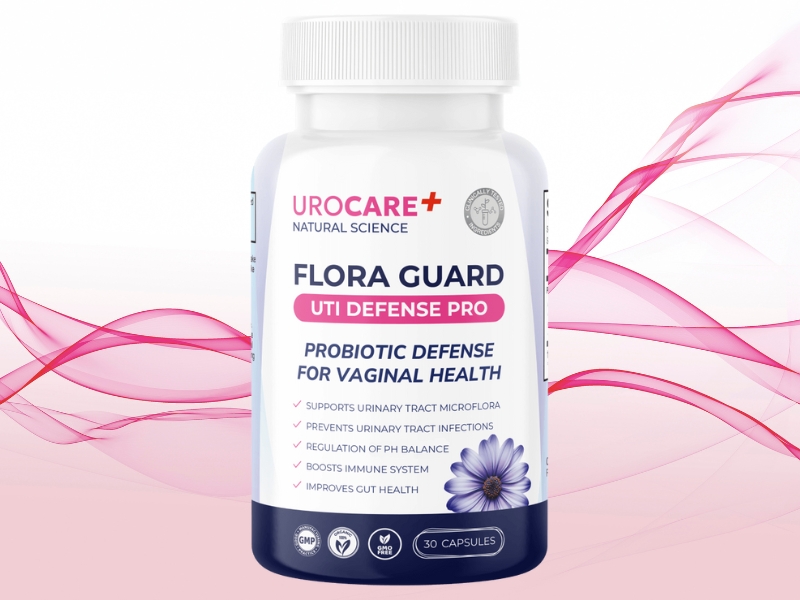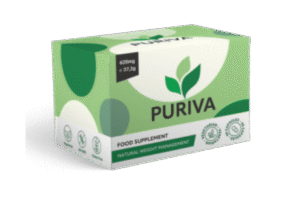
Urocare FLORA GUARD Capsules Reviews (INVESTIGATED) Safe to Use or Waste of Money?
Urinary comfort and intimate wellness don’t get talked about nearly enough—and when they do, it’s often only after a bout of burning, urgency, or that “something’s off” feeling. Urocare FLORA GUARD Capsules step into this space with a simple promise: support a healthy urinary tract and balanced intimate flora, day in and day out. If you’re considering a daily supplement for urinary and vaginal microbiome support, or you’re simply curious about how products like this are meant to work, this deep dive is for you.
Quick note: Nothing here is medical advice. If you have symptoms of an infection, recurring UTIs, are pregnant, breastfeeding, or take prescription medications, talk to your healthcare provider before starting any new supplement.
What Is Urocare FLORA GUARD?
Urocare FLORA GUARD is a dietary supplement formulated to support the urinary tract and maintain a balanced urogenital microbiome. While labels can vary by market, products in this category typically blend:
-
D-Mannose – a simple sugar that passes into urine and is widely used for urinary comfort support.
-
Cranberry extract (standardized to PACs) – proanthocyanidins (PACs) are plant compounds from cranberries associated with urinary tract support.
-
Targeted probiotics – most often Lactobacillus species such as L. rhamnosus and L. reuteri, which naturally colonize the vaginal and urinary environment.
-
Vitamin C (ascorbic acid) – an antioxidant that may help maintain healthy urine characteristics.
-
Herbal allies (varies) – such as hibiscus, uva ursi, or bearberry leaf extracts, included in some blends for additional botanical support.
-
Zinc or selenium (in modest amounts) – for general immune function support.
Urocare positions FLORA GUARD as a routine, preventative-minded formula rather than a “quick fix.” The idea is to nurture your terrain (microbiome + urinary environment) so episodes are less likely to start in the first place.
Who Might Consider It?
-
People prone to urinary discomfort after travel, strenuous workouts, new personal care products, prolonged sitting, or dehydration.
-
Individuals seeking microbiome-forward support for intimate balance (odour, discharge changes, or mild discomfort not due to active infection).
-
Those who want a non-antibiotic daily strategy between medical visits, under clinician guidance.
-
Postmenopausal individuals who experience shifts in vaginal flora with age (often alongside clinician-advised strategies like vaginal moisturizers or, where appropriate, local estrogen prescribed by a doctor).
If you have fever, flank pain, blood in the urine, new or worsening pain, or symptoms lasting more than 48 hours, that’s not supplement time—that’s medical care now time.
How the Formula Typically Works (Ingredient-by-Ingredient)
1) D-Mannose
D-Mannose is a non-metabolized simple sugar excreted into the urine. The prevailing explanation is that it can reduce the ability of certain bacteria to adhere to the bladder wall, so they’re more easily flushed. It doesn’t act like an antibiotic; rather, it’s a mechanical “no parking” sign. Many people use it for routine support before or after “trigger” events (e.g., long car rides, vigorous intimacy, or wearing tight, non-breathable clothing for hours).
What to look for on a label: 500–2,000 mg per serving, depending on use. Daily maintenance doses tend to be lower than acute protocols.
Why it matters: Adherence is one of the earliest steps in the chain of urinary discomfort. Supporting that step may help maintain comfort.
2) Cranberry Extract (Standardized to PACs)
Whole “cranberry powder” is not the same as standardized PACs (often reported as mg PACs/serving by the DMAC method). PACs are thought to interfere with bacterial adhesion similarly to D-Mannose but via different plant compounds.
What to look for: 36 mg PACs (DMAC) per day is a commonly referenced maintenance amount in the category.
Tip: Juice cocktail ≠ PACs standardization, and juice adds sugar. Capsules with standardized PACs offer a more predictable approach.
3) Lactobacillus Probiotics (e.g., L. rhamnosus, L. reuteri)
A balanced vaginal microbiome is predominantly Lactobacillus-rich. These organisms produce lactic acid and other metabolites that help maintain a slightly acidic pH inhospitable to problematic bacteria. When taken orally, certain strains can survive GI transit and influence the urogenital tract via the gut-vagina axis.
What to look for: Named strains with CFU (colony forming units) at end of shelf life, e.g., L. rhamnosus GR-1 or L. reuteri RC-14 (example strains in the category). Target 1–10 billion CFU/day for maintenance, unless your clinician advises otherwise.
4) Vitamin C
Vitamin C acts as an antioxidant and can support overall immune function. In urinary support blends, modest amounts are used to promote healthy urine characteristics and general resilience.
What to look for: 60–250 mg per serving is common in daily blends. Higher amounts may not be necessary and could cause GI upset in some people.
5) Botanical Co-Factors (If Present)
-
Hibiscus sabdariffa: Often included for gentle urinary support and antioxidant capacity.
-
Uva ursi (bearberry): Traditionally used for urinary comfort; modern blends sometimes include standardized, low doses for short-term use. (Not for prolonged use or during pregnancy; always consult a clinician.)
-
Dandelion leaf: A mild diuretic botanical sometimes used to support fluid balance.
What to look for: Transparent dosing and cautions. If a blend uses potent botanicals, the label should explicitly state contraindications.
The Promised Benefits (And How to Think About Them)
-
Daily urinary comfort: By nudging the early steps of bacterial adhesion and encouraging steady hydration habits, many users report fewer “off days.”
-
Microbiome balance: With targeted Lactobacillus, the formula aims to maintain a harmonious pH and flora profile, which can correlate with comfort.
-
Travel and lifestyle resilience: A compact routine you can carry through flights, festivals, or long workweeks.
-
Complement to healthy habits: Supplements are supporting actors; diet, hydration, bathroom timing, breathable fabrics, and gentle hygiene remain the lead roles.
No supplement can guarantee prevention or treatment. The value is in stacking small, low-risk supports that reduce friction and encourage consistency.
How to Use Urocare FLORA GUARD
General maintenance:
-
Take 1–2 capsules daily with water, preferably at the same time each day.
-
Pair with a full glass of water; aim for steady hydration across the day.
When you anticipate triggers:
-
Consider taking your daily dose before and after known triggers (e.g., long travel days).
-
Do not exceed label directions without clinician guidance.
If symptoms arise:
-
Supplements are not a substitute for medical diagnosis.
-
If you experience burning urination, urgency, pelvic pain, fever, or back/flank pain, seek medical care promptly. If your clinician approves, you can continue the supplement as supportive care, but antibiotics—when prescribed—must be taken exactly as directed.
How long until you notice something?
-
Microbiome-focused benefits often emerge over 2–4 weeks of steady use. Some people feel comfort changes sooner, especially with D-Mannose + PACs.
Safety, Side Effects, and Interactions
Generally well-tolerated. The most reported mild effects are temporary bloating, gas, or soft stools when starting probiotics or higher doses of Vitamin C.
D-Mannose cautions:
-
Usually well tolerated, but very high doses can cause GI upset.
-
People with diabetes should consult their clinician due to theoretical impacts on urine glucose testing and overall glycemic management.
Cranberry cautions:
-
Cranberry may interact with warfarin (blood thinner). If you take anticoagulants, consult your provider.
-
Those with a history of kidney stones should discuss oxalate content with a clinician.
Herbal cautions:
-
Botanicals like uva ursi are not for pregnancy or long-term continuous use.
-
If you have liver, kidney, or chronic GI conditions, review the full label with your healthcare provider.
Allergies:
-
Check for soy, dairy, or gluten if you have sensitivities. Many modern blends are free from common allergens, but verify.
Quality Matters: What to Check on the Label
-
Standardization & Transparency:
-
Cranberry PACs listed in mg and measured by a recognized method (e.g., DMAC).
-
Named probiotic strains with CFU through end of shelf life.
-
-
CLEAN Manufacturing:
-
GMP-certified facility, ideally with third-party testing for purity, identity, and potency.
-
-
Additives:
-
Avoid unnecessary artificial colors, titanium dioxide, or high-sugar carriers.
-
Prefer vegetarian or delayed-release capsules to improve probiotic survival.
-
-
Storage:
-
Probiotics sometimes require cool storage. If the product is shelf-stable, label should explain the technology (e.g., freeze-drying or microencapsulation).
-
Building a Daily Routine That Works
Think of FLORA GUARD as part of a mini-protocol:
-
Hydration rhythm:
-
Begin your day with 300–500 ml water.
-
Aim for pale-straw urine color (a practical indicator of hydration).
-
-
Smart bathroom habits:
-
Don’t hold urine for hours.
-
Urinate shortly after intimacy if that’s historically been a trigger.
-
-
Gentle hygiene:
-
Avoid harsh soaps, scented washes, or douching.
-
Choose breathable, cotton-blend underwear; change out of sweaty workout clothes promptly.
-
-
Dietary support:
-
Emphasize fiber (vegetables, legumes, whole grains) to feed a healthier gut-vagina axis.
-
Consider fermented foods (yogurt with live cultures, kefir, kimchi).
-
-
Consistent supplementation:
-
Take Urocare FLORA GUARD at the same time daily. Set a phone reminder.
-

Frequently Asked Questions (FAQs)
1) Can I take Urocare FLORA GUARD with antibiotics?
Ask your clinician. A common approach is to separate probiotics 2–3 hours away from antibiotic doses and continue probiotics for 1–2 weeks after the course. Do not delay or alter antibiotic therapy without medical advice.
2) How fast will it work?
Some people notice urinary comfort benefits within days, especially around triggers. Microbiome balance is more gradual—plan for 2–4 weeks of daily use for steadier changes.
3) Is it safe during pregnancy or breastfeeding?
Safety depends on the exact formula. Many probiotics and vitamin C doses are considered compatible, but certain botanicals are not. Always consult your obstetric provider and verify the specific label.
4) Will it “cure” UTIs?
No supplement can promise a cure. If you have symptoms of infection, seek a urine test and professional treatment.
5) Can men use it?
Yes—urinary comfort and microbiome support aren’t gender-exclusive. However, recurrent urinary symptoms in men should be medically evaluated to rule out prostate or other issues.
6) What if I have recurrent episodes?
Request a recurrent UTI workup with your clinician. They may check urine cultures, anatomy, hormones (for postmenopausal patients), and discuss targeted strategies, including topical estrogen (if appropriate), post-coital prophylaxis, or behavioral adjustments.
How Urocare FLORA GUARD Compares to Common Alternatives
-
Cranberry-only capsules: Simple and often affordable, but lack D-Mannose and probiotics. PAC standardization varies widely.
-
D-Mannose-only powders: Useful for targeted urinary support, but don’t address vaginal microbiome balance.
-
Probiotic-only formulas: Great for flora, but no direct support on adhesion dynamics from D-Mannose or PACs.
-
Juices and gummies: Palatable but can add sugar and may lack standardized PAC content.
-
Prescription prophylaxis: Clinician-directed, sometimes necessary for recurrent cases; carries antibiotic stewardship considerations.
Where FLORA GUARD fits: It’s a hybrid approach—adhesion support + flora support—designed for people who want broader, daily coverage with one product.
A Sensible 30-Day Plan
Week 1:
-
Start with 1 capsule daily with a full glass of water.
-
Track hydration and bathroom habits. Note any GI changes (usually transient as probiotics settle).
Week 2:
-
If well tolerated and label permits, consider increasing to 2 capsules/day if you want stronger daily support (e.g., during travel).
-
Add fermented foods 3–4 times/week.
Week 3:
-
Reassess: Are you noticing steadier comfort? If yes, continue. If not, stick with consistency. This is often when microbiome shifts become more apparent.
Week 4:
-
Decide on maintenance (1 capsule/day) vs. continued 2/day if your personal pattern calls for it (follow label guidance).
-
If symptoms have persisted at any point, loop in your clinician. Supplements should complement, not replace, medical care.
Red Flags That Need Medical Attention (Don’t Self-Manage These)
-
Fever, chills, back/flank pain
-
Blood in urine or severe pelvic pain
-
Symptoms lasting more than 48 hours or recurring frequently
-
New symptoms in pregnancy
-
Known kidney or urinary tract abnormalities
-
Symptoms in children, older adults, or immunocompromised individuals
Practical Buying & Storage Tips
-
Check the “Supplement Facts” panel for standardized cranberry PACs, D-Mannose per serving, and named Lactobacillus strains with CFU counts at end of shelf life.
-
Look for GMP & third-party testing badges (NSF, ISO, or independent lab verification).
-
Mind the storage: If the label suggests refrigeration for probiotics, follow it; if shelf-stable, keep in a cool, dry place away from sunlight.
-
Batch & expiration: Choose the freshest lot you can. Probiotic potency drifts down over time.
Habit Stacking: Little Tweaks That Multiply Results
-
Morning glass of water on your nightstand.
-
Bathroom break timer during long meetings or gaming sessions.
-
Breathable fabrics—cotton or performance blends that wick moisture.
-
Post-workout changeout ASAP; don’t linger in damp leggings or swimsuits.
-
Gentle skincare in the vulvar area; skip fragrances and aggressive scrubs.
-
High-fiber plate most meals; consider a fiber supplement if intake is low (ask your clinician if you’re on medications).
Myths vs. Facts
-
Myth: “If I take cranberry, I never need antibiotics.”
Fact: Cranberry and D-Mannose support comfort and maintenance but don’t treat active infections. -
Myth: “All probiotics are the same.”
Fact: Strain matters. Named strains with clinical backing for urogenital support are not interchangeable with generic blends. -
Myth: “More is always better.”
Fact: Mega-dosing can backfire (GI upset, wasted money). Start with label-directed amounts and build habits first. -
Myth: “Only women benefit from urinary support supplements.”
Fact: Anyone with a bladder can benefit from strategies that promote urinary comfort and balance.
Who Should Avoid or Use With Caution
-
Those on anticoagulants (e.g., warfarin): Discuss cranberry with your doctor.
-
Diabetes management: Discuss D-Mannose and any changes in hydration/urination patterns.
-
Pregnant or breastfeeding individuals: Review the exact formula—especially botanicals—with your provider.
-
Kidney stone history: Ask about oxalates in cranberry extracts.
-
Immune-compromised individuals: Probiotics are typically safe but warrant a clinician’s guidance.
What Success Looks Like (Realistic Expectations)
-
Fewer “on edge” days where you’re worried symptoms might start.
-
More predictable comfort through travel, long shifts, or gym days.
-
A steadier routine you hardly think about—capsule, water, smart hygiene, and you’re on with your day.
It’s subtle, not dramatic—and that’s the point. You want less drama from your urinary tract, not more.
The Bottom Line
Urocare FLORA GUARD Capsules make a strong case as a daily, balanced approach to urinary and intimate wellness. By blending D-Mannose, standardized cranberry PACs, and targeted Lactobacillus probiotics, the formula addresses both environment (adhesion and urine characteristics) and ecosystem (microbiome). Add modest Vitamin C and, where appropriate, carefully selected botanicals, and you get a practical tool for everyday resilience.
Still, the best outcomes come from stacking: hydration, bathroom habits, breathable fabrics, gentle hygiene, fiber-rich meals, and consistent supplementation. And remember: supplements support wellness; clinicians diagnose and treat disease. Know the difference, and you’ll use FLORA GUARD exactly the way it’s intended—as a quiet ally that keeps you feeling like yourself.

![Zanari CBD Gummies Reviews [NEWEST UPDATE] Every USA Customer Must Know Before Spending!!! Zanari CBD Gummies Reviews [NEWEST UPDATE] Every USA Customer Must Know Before Spending!!!](https://bingnews24x7.com/wp-content/uploads/2025/10/Golden-Fountain-Farms-CBD-Gummies-150x150.png)






![Green Nature Farms CBD Gummies Reviews [Website Fact Check!] Know The Truth Before Buying! Green Nature Farms CBD Gummies Reviews [Website Fact Check!] Know The Truth Before Buying!](https://bingnews24x7.com/wp-content/uploads/2025/09/Golden-Fountain-Farms-CBD-Gummies-150x150.png)




![Zanari CBD Gummies Reviews [NEWEST UPDATE] Every USA Customer Must Know Before Spending!!! Zanari CBD Gummies Reviews [NEWEST UPDATE] Every USA Customer Must Know Before Spending!!!](https://bingnews24x7.com/wp-content/uploads/2025/10/Golden-Fountain-Farms-CBD-Gummies-300x169.png)
![Green Nature Farms CBD Gummies Reviews [Website Fact Check!] Know The Truth Before Buying! Green Nature Farms CBD Gummies Reviews [Website Fact Check!] Know The Truth Before Buying!](https://bingnews24x7.com/wp-content/uploads/2025/09/Golden-Fountain-Farms-CBD-Gummies-300x169.png)




Average Rating